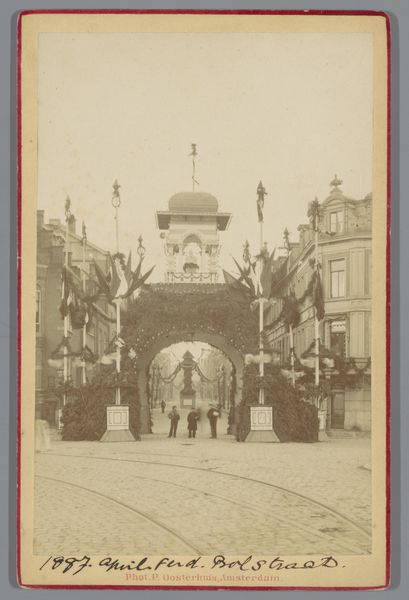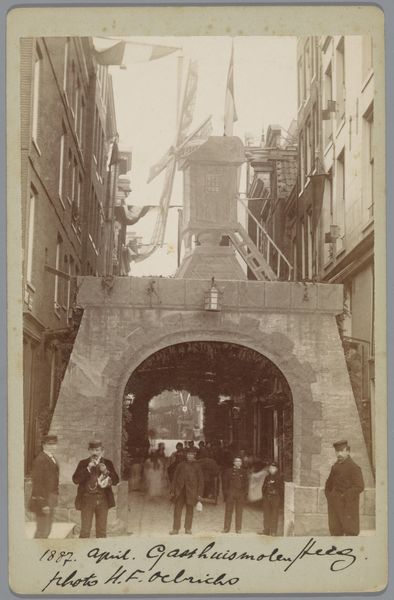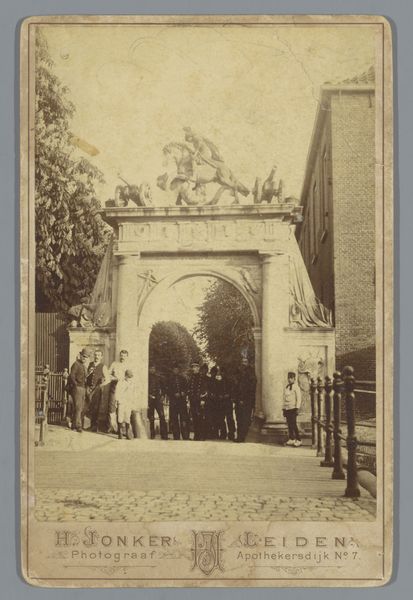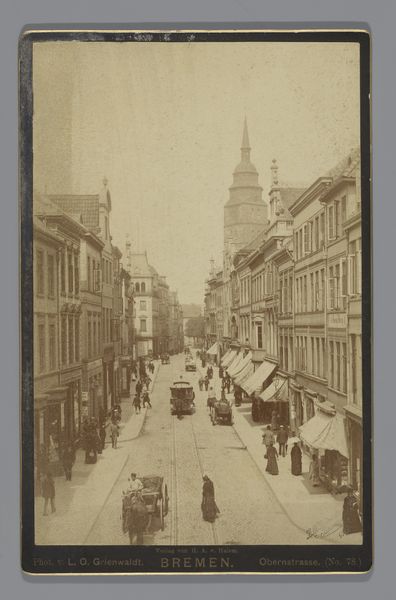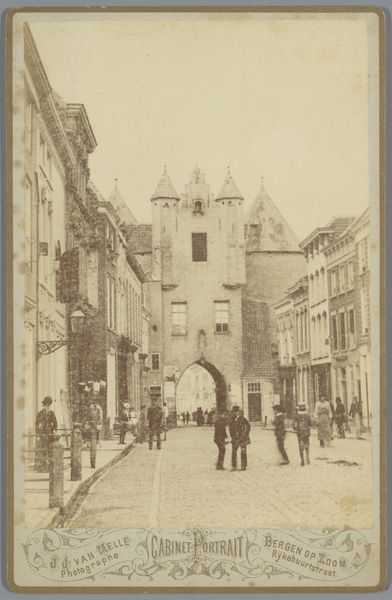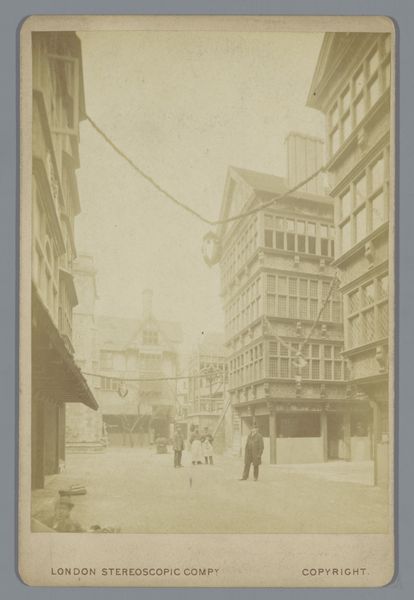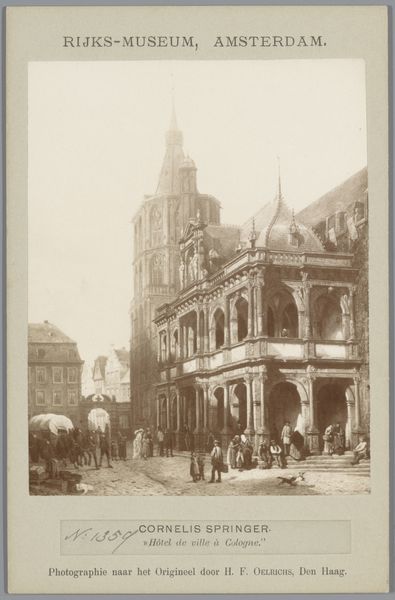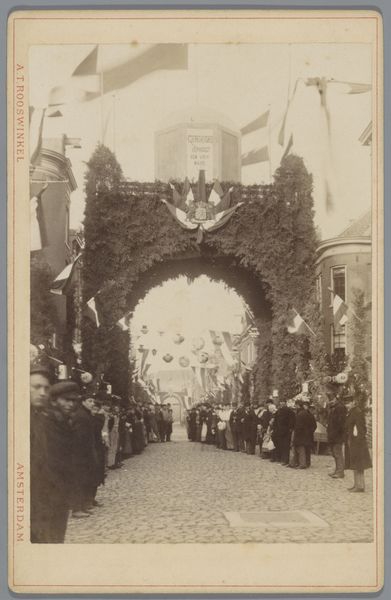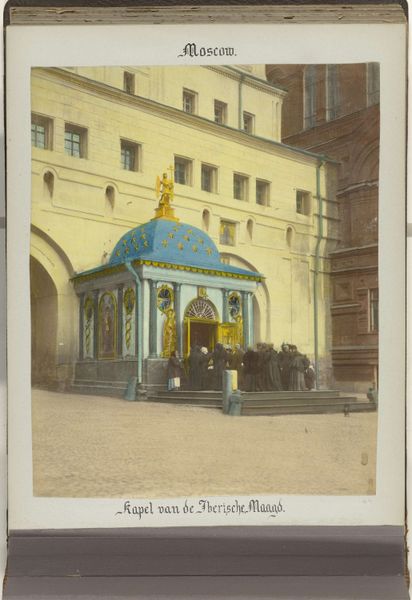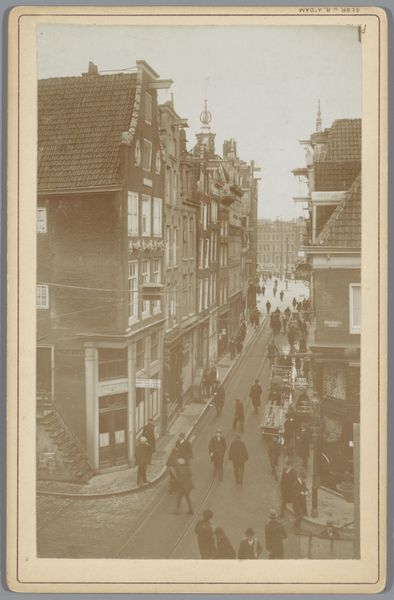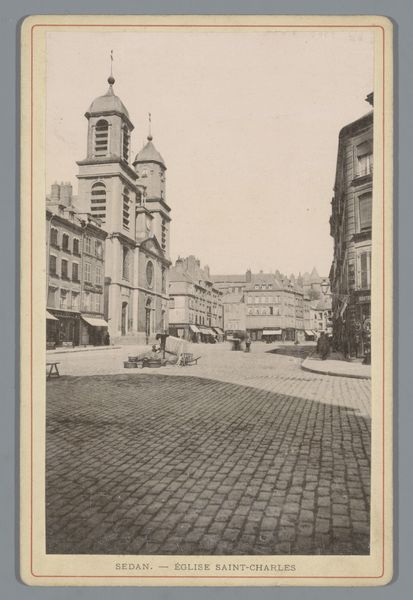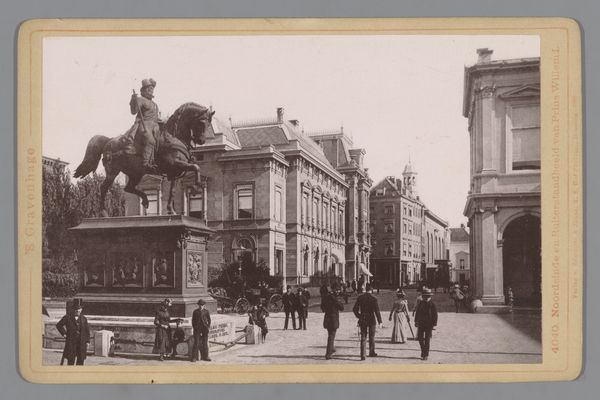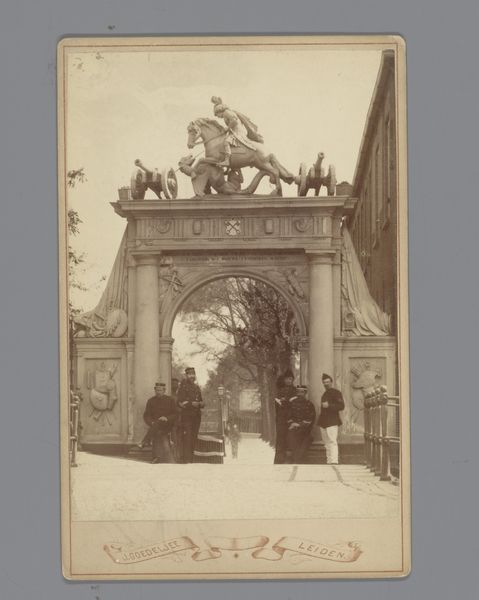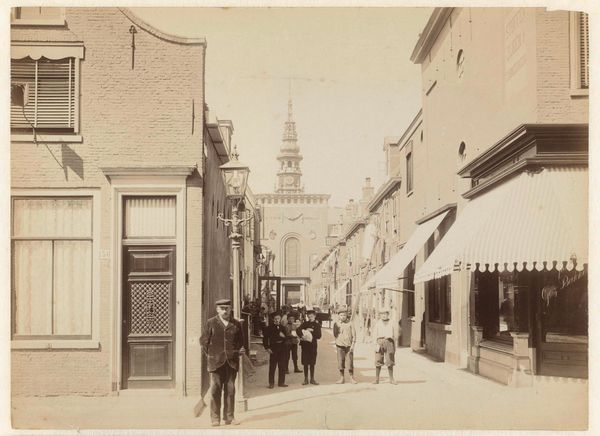
Groep mensen op de Reguliersbreestraat in Amsterdam tijdens de Aprilfeesten in 1887 1887
0:00
0:00
photography, gelatin-silver-print
#
aged paper
#
toned paper
#
street-photography
#
photography
#
gelatin-silver-print
#
19th century
#
cityscape
#
genre-painting
#
realism
Dimensions: height 167 mm, width 108 mm
Copyright: Rijks Museum: Open Domain
Editor: Here we have Andreas Theodorus Rooswinkel's photograph, "Groep mensen op de Reguliersbreestraat in Amsterdam tijdens de Aprilfeesten in 1887," a gelatin-silver print capturing a bustling Amsterdam street during the April festivities. There's a real sense of captured history here; what stands out to you most about this photograph? Curator: What strikes me is the intentional staging amidst the chaos. The elaborate archway, adorned with the dates 1817 and 1887, dominates the frame. The people are assembled as though they are a set of actors on stage. Who is invited to participate in this moment and celebration? This becomes the question we need to pose to the photograph. Editor: An interesting approach! So you're looking beyond the festive occasion itself. How does focusing on participation reframe our understanding? Curator: It highlights the socio-political structures at play. Street photography can appear objective, a simple record. But whose stories are being told? Look at how class and potentially gender are represented in the groupings of people in the shot, what can we infer? How might power dynamics have shaped who got to be visible, celebrated, or remembered? Editor: I see what you mean. It prompts us to consider who is centered and who is marginalized in historical narratives. Even in a seemingly candid street scene. Curator: Exactly! This isn't just a snapshot; it’s a constructed image reflecting the values and power structures of its time. Considering those structures, how does this affect your initial viewing experience? Editor: It adds layers of complexity. What I thought was simply a celebratory image becomes a visual text ripe for critical interpretation. I appreciate this deconstruction. Curator: And that is the point; to continue unpacking historical narratives, questioning their presumed neutrality. By interrogating the image, we disrupt passive spectatorship and become active participants in understanding the past and its relationship to the present.
Comments
No comments
Be the first to comment and join the conversation on the ultimate creative platform.
